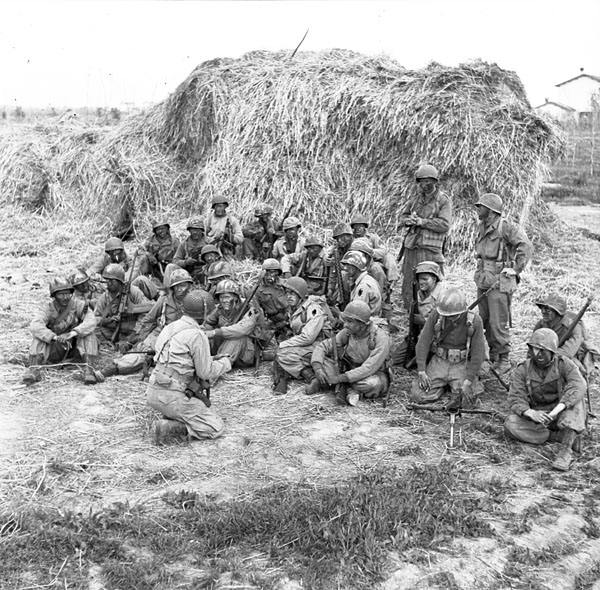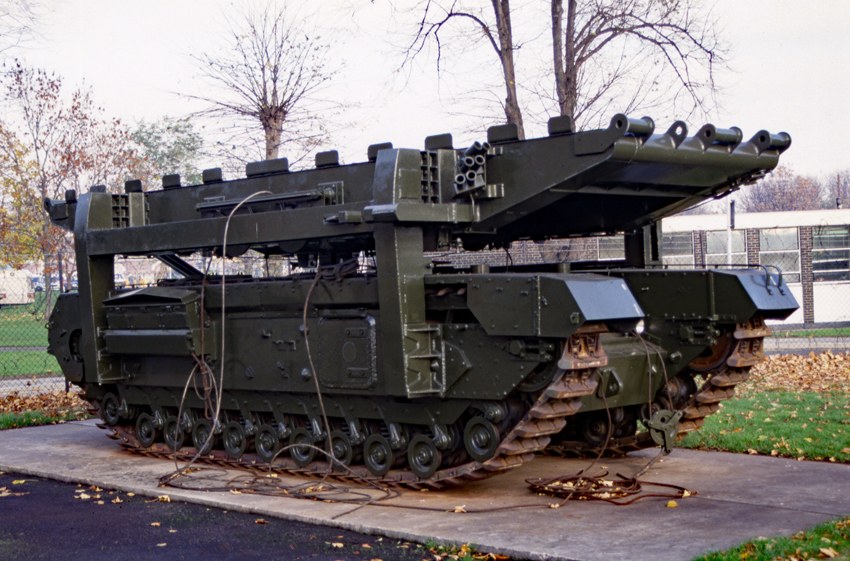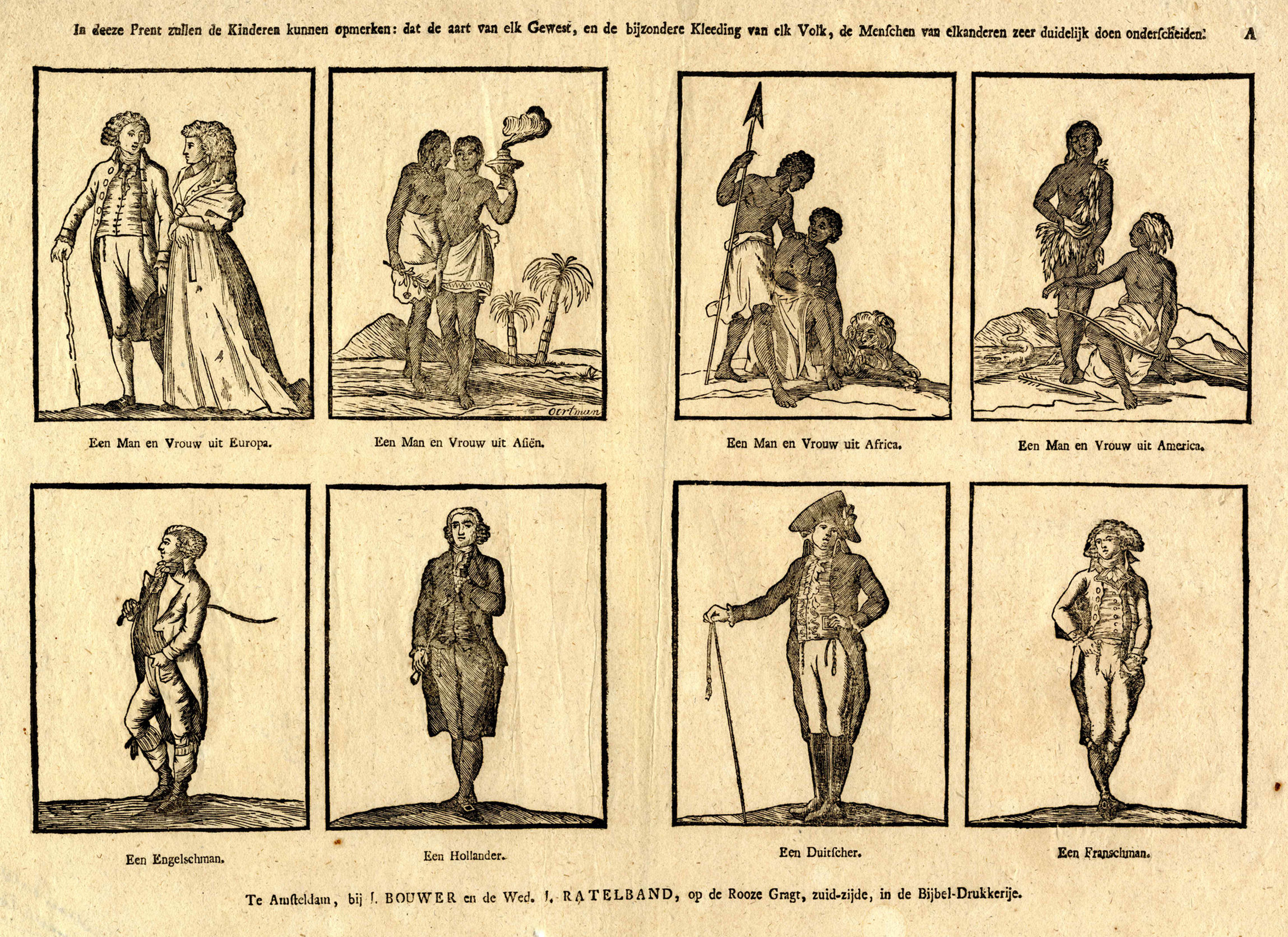|
First Special Service Force
The 1st Special Service Force (FSSF) was an elite joint American–Canadian commando unit in World War II, formed by Lieutenant Colonel Robert T. Frederick of the Operations Division of the U.S. General Staff. During the Italian campaign of World War II, it was commanded by Frederick and attached to the United States Army North, United States Fifth Army. In August 1944, the Force was attached to 1st Airborne Task Force (commanded by then Major General Frederick) for the campaign in southern France. The unit was organized in 1942 and trained at Fort William Henry Harrison near Helena, Montana, in the United States. The Force served in the Aleutian Islands, fought in Italy and southern France, and was disbanded in December 1944. The modern American and Canadian special operations forces trace their heritage to this unit. In 2013, the United States Congress passed a bill to award the 1st Special Service Force the Congressional Gold Medal. Origins and development Background Geo ... [...More Info...] [...Related Items...] OR: [Wikipedia] [Google] [Baidu] |
Shoulder Patch
Shoulder sleeve insignia (SSI) are distinctive Textile, cloth Embroidered patch, patches worn on the left sleeve of the United States Army Military uniform, uniform just below the shoulder seam by soldiers assigned to Divisions of the United States Army, divisions, corps, Field army, armies, and other specifically authorized organizations. They are also worn on the right sleeve by soldiers to indicate former Expeditionary warfare, overseas service with certain units during periods of United States, U.S. military operations in hostile conditions (MOHC). Versions Colored Shoulder sleeve insignia were often designed with intricate designs including bright colors, when created. Because these bright colors and designs risk standing out when a soldier is in combat or in hiding, the shoulder sleeve insignia in its color form was commonly only worn on the dress uniform or service uniform when a soldier was not in combat. However, with the retirement of the Army Green Uniform in 2015 ... [...More Info...] [...Related Items...] OR: [Wikipedia] [Google] [Baidu] |
Geoffrey Pyke
Geoffrey Nathaniel Joseph Pyke (9 November 1893 – 21 February 1948) was an English people, English journalist, educationalist, and inventor. Pyke came to public attention when he escaped from internment in Germany during World War I. He had travelled to Germany under a false passport, and was soon arrested and interned. During the Second World War, Pyke proposed the newly invented material, pykrete, for the construction of the ship ''Project Habakkuk, Habakkuk''. Early life Pyke's father, Lionel Edward Pyke, was a Jewish lawyer who died when Pyke was only five, leaving his family with no money. His mother quarrelled with relatives and made life "hell" for her children. She sent Pyke to Wellington College, Berkshire, Wellington, then a Independent school (UK), public school mainly for the sons of Army officers. At his mother's insistence, Pyke maintained the dress and habits of an Orthodox Judaism, Orthodox Jew. He became an atheist when he was thirteen. The persecuti ... [...More Info...] [...Related Items...] OR: [Wikipedia] [Google] [Baidu] |
Hydroelectric Plant
Hydroelectricity, or hydroelectric power, is electricity generated from hydropower (water power). Hydropower supplies 15% of the world's electricity, almost 4,210 TWh in 2023, which is more than all other renewable sources combined and also more than nuclear power. Hydropower can provide large amounts of low-carbon electricity on demand, making it a key element for creating secure and clean electricity supply systems. A hydroelectric power station that has a dam and reservoir is a flexible source, since the amount of electricity produced can be increased or decreased in seconds or minutes in response to varying electricity demand. Once a hydroelectric complex is constructed, it produces no direct waste, and almost always emits considerably less greenhouse gas than fossil fuel-powered energy plants. [...More Info...] [...Related Items...] OR: [Wikipedia] [Google] [Baidu] |
Italian Alps
The Alps () are some of the highest and most extensive mountain ranges in Europe, stretching approximately across eight Alpine countries (from west to east): Monaco, France, Switzerland, Italy, Liechtenstein, Germany, Austria and Slovenia. The Alpine arch extends from Nice on the western Mediterranean Sea, Mediterranean to Trieste on the Adriatic Sea, Adriatic and Vienna at the beginning of the Pannonian Basin. The mountains were formed over tens of millions of years as the African and Eurasian tectonic plates collided. Extreme shortening caused by the event resulted in marine sedimentary rocks rising by thrust fault, thrusting and Fold (geology), folding into high mountain peaks such as Mont Blanc and the Matterhorn. Mont Blanc spans the French–Italian border, and at is the highest mountain in the Alps. The Alpine region area contains 82 peaks higher than List of Alpine four-thousanders, . The altitude and size of the range affect the climate in Europe; in the mountain ... [...More Info...] [...Related Items...] OR: [Wikipedia] [Google] [Baidu] |
Norway
Norway, officially the Kingdom of Norway, is a Nordic countries, Nordic country located on the Scandinavian Peninsula in Northern Europe. The remote Arctic island of Jan Mayen and the archipelago of Svalbard also form part of the Kingdom of Norway. Bouvet Island, located in the Subantarctic, is a Dependencies of Norway, dependency, and not a part of the Kingdom; Norway also Territorial claims in Antarctica, claims the Antarctic territories of Peter I Island and Queen Maud Land. Norway has a population of 5.6 million. Its capital and largest city is Oslo. The country has a total area of . The country shares a long eastern border with Sweden, and is bordered by Finland and Russia to the northeast. Norway has an extensive coastline facing the Skagerrak strait, the North Atlantic Ocean, and the Barents Sea. The unified kingdom of Norway was established in 872 as a merger of Petty kingdoms of Norway, petty kingdoms and has existed continuously for years. From 1537 to 1814, Norway ... [...More Info...] [...Related Items...] OR: [Wikipedia] [Google] [Baidu] |
Arctic Warfare
Cold-weather warfare, also known as cold-region warfare, arctic warfare or winter warfare, encompasses military operations affected by snow, ice, Mud season, thawing conditions, or cold, both on land and at sea, as well as the strategies and tactics used by military forces in these situations and environments. Cold-weather conditions occur year-round at high elevation or latitudes, and elsewhere materialize seasonally during the winter period. Mountain warfare often takes place in cold weather or on terrain that is affected by ice and snow, such as the Alps and the Himalayas. Historically, most such operations have been during winter in the Northern Hemisphere. Some have occurred above the Arctic Circle where snow, ice, and cold may occur throughout the year. At times, cold—or its aftermath, thaw—has been a decisive factor in the failure of a campaign, as with the French invasion of Russia in 1812, the Winter War, Soviet invasion of Finland in 1939, and the Operation Barba ... [...More Info...] [...Related Items...] OR: [Wikipedia] [Google] [Baidu] |
Combined Operations
In current military use, combined operations are operations conducted by forces of two or more allied nations acting together for the accomplishment of a common strategy, a strategic and operational and sometimes tactical cooperation. Interaction between units and formations of the land, naval and air forces, or the cooperation between military and civilian authorities in peacekeeping or disaster relief operations is known as joint operations or interoperability capability. Pre-modern history The concept of combined operations evolved largely as a result of expeditionary warfare, which can be traced to the Sea Peoples. In its basic form it involved raiding coastal regions by land forces arriving from the naval vessels. The raiding tactics were expanded into more complex operations by Alexander the Great, who used naval vessels for both troop transporting and logistics in his campaigns. The next exponents of combined operations in the ancient world of the Mediterranean ... [...More Info...] [...Related Items...] OR: [Wikipedia] [Google] [Baidu] |
Hobart's Funnies
Hobart's Funnies is the nickname given to a number of specialist armoured fighting vehicles derived from tanks operated during the Second World War by units of the 79th Armoured Division of the British Army or by specialists from the Royal Engineers. They were designed in light of problems that more standard tanks experienced during the amphibious Dieppe Raid, so that the new models would be able to overcome the problems of the planned invasion of Normandy. These tanks played a major part on the Commonwealth beaches during the landings. They were forerunners of the modern combat engineering vehicle and took their nickname from the 79th Division's commander, Major General Percy Hobart. The vehicles converted were chiefly Churchill tanks and American-supplied M4 Sherman tanks. History Plans to invade continental Europe were completely revised after the failure of the raid on Dieppe in 1942. Allied units in Normandy would need to overcome terrain, obstacles and coastal forti ... [...More Info...] [...Related Items...] OR: [Wikipedia] [Google] [Baidu] |
Winston Churchill
Sir Winston Leonard Spencer Churchill (30 November 1874 – 24 January 1965) was a British statesman, military officer, and writer who was Prime Minister of the United Kingdom from 1940 to 1945 (Winston Churchill in the Second World War, during the Second World War) and again from 1951 to 1955. For some 62 of the years between 1900 and 1964, he was a Member of Parliament (United Kingdom), member of parliament (MP) and represented a total of five Constituencies of the Parliament of the United Kingdom, constituencies over that time. Ideologically an adherent to economic liberalism and imperialism, he was for most of his career a member of the Conservative Party (UK), Conservative Party, which he led from 1940 to 1955. He was a member of the Liberal Party (UK), Liberal Party from 1904 to 1924. Of mixed English and American parentage, Churchill was born in Oxfordshire into the wealthy, aristocratic Spencer family. He joined the British Army in 1895 and saw action in British R ... [...More Info...] [...Related Items...] OR: [Wikipedia] [Google] [Baidu] |
Boffin
Boffin is a British slang term for a scientist, engineer, or other person engaged in technical or scientific research and development. A "boffin" was viewed by some in the regular military or government services as odd, quirky or peculiar, though quite bright and essential to helping in the war effort through having and developing the key ideas leading to transformative military capabilities. Origins Civil The origins and etymology of ''boffin'' are obscure. A link to the mathematician and evolutionary theorist Buffon has been proposed. Alternatively, linguist Eric Partridge proposed the term derived from Nicodemus Boffin, the good-hearted 'golden dustman' character who appears in the novel ''Our Mutual Friend'' (1864/5) by Charles Dickens, described there as a "very odd-looking old fellow indeed". In the novel, Mr Boffin pursues a late-life education, employing Silas Wegg to teach him to read. William Morris also has a man called Boffin, based on Charles Dickens and said ... [...More Info...] [...Related Items...] OR: [Wikipedia] [Google] [Baidu] |
Stereotype
In social psychology, a stereotype is a generalization, generalized belief about a particular category of people. It is an expectation that people might have about every person of a particular group. The type of expectation can vary; it can be, for example, an expectation about the group's personality, preferences, appearance or ability. Stereotypes make information processing easier by allowing the perceiver to rely on previously stored knowledge in place of incoming information. Stereotypes are often faulty generalization, faulty, inaccurate, and Belief perseverance, resistant to new information. Although stereotypes generally have negative implications, they aren't necessarily negative. They may be positive, neutral, or negative. They can be broken down into two categories: explicit stereotypes, which are conscious, and implicit stereotypes, which are subconscious. Explicit stereotypes An explicit stereotype is a belief about a group that a person is consciously aware of a ... [...More Info...] [...Related Items...] OR: [Wikipedia] [Google] [Baidu] |
Unorthodox
Unorthodox may refer to: Music * Unorthodox (band), an American doom metal band * ''Unorthodox'' (Edge of Sanity album), 1992 * ''Unorthodox'' (Snow Tha Product album), 2011 * "Unorthodox" (Joey Badass song), 2013 * "Unorthodox" (Wretch 32 song), 2011 Television * ''Unorthodox'' (miniseries), a 2020 Netflix miniseries loosely based on Deborah Feldman's memoir (see below) * "Unorthodox" (''Law & Order: Special Victims Unit''), a television episode Other uses * ''Unorthodox'' (podcast), a Jewish podcast hosted by Mark Oppenheimer, Stephanie Butnick, and Liel Leibovitz * '' Unorthodox: The Scandalous Rejection of My Hasidic Roots'', a 2012 memoir by Deborah Feldman * Unorthodox Engineers, the subject of a series of science fiction short stories by Colin Kapp * Left-arm unorthodox spin, a style of bowling in the sport of cricket * Unorthodox chess piece, a chess piece not used in conventional chess, but used in certain chess variants See also * Heterodoxy, any opinions or d ... [...More Info...] [...Related Items...] OR: [Wikipedia] [Google] [Baidu] |








